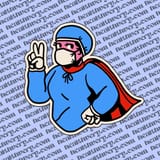Unraveling the Mystery: Unlocking the Secrets of Stiff Person Syndrome
Discover Stiff Person Syndrome, a rare neurological disorder causing muscle stiffness, rigidity, and spasms; learn its causes, symptoms, and treatment options.

Stiff Person Syndrome (SPS) is a rare and often debilitating neurological disorder that primarily affects the central nervous system. It is characterized by progressive muscle stiffness, rigidity, and painful spasms in the trunk and limbs. The exact cause of SPS is unknown, but it is believed to involve an overactive immune system targeting specific proteins in the body, leading to inflammation and damage to nerve cells. This blog post aims to discuss the signs, symptoms, diagnosis, and management of this rare condition.
Individuals with SPS experience muscle stiffness and rigidity that can be both painful and disabling. The severity of symptoms varies widely between patients, and the progression of the disorder is unpredictable. Symptoms typically begin in the back and abdominal muscles and gradually spread to the limbs. Muscle spasms can be triggered by a variety of stimuli, such as sudden movements, loud noises, or emotional stress. Over time, the rigidity can lead to impaired mobility, an exaggerated posture, and even difficulty breathing.
Diagnosis of SPS involves a thorough neurological examination and a detailed patient history. Due to the rarity of the condition, it is often misdiagnosed, leading to delays in appropriate treatment. In addition to a clinical assessment, blood tests looking for specific antibodies associated with SPS, such as anti-GAD (glutamic acid decarboxylase) antibodies, can help support the diagnosis. Electromyography (EMG), a test that evaluates muscle and nerve function, may also be performed to rule out other potential causes of the symptoms.
Currently, there is no cure for SPS. Treatment is focused on managing symptoms, improving mobility, and enhancing the quality of life for affected individuals. A multidisciplinary approach is essential, with input from neurologists, physical therapists, occupational therapists, and pain specialists. Medications to reduce muscle stiffness and spasms, such as benzodiazepines and muscle relaxants, are often prescribed. Immunosuppressive drugs may also be considered in cases where the immune system is thought to be overactive, and intravenous immunoglobulin (IVIG) therapy has shown promise in some patients.
Physical therapy plays a critical role in the management of SPS. It helps maintain and improve range of motion, flexibility, and strength, while also addressing any compensatory movement patterns that may have developed due to pain and stiffness. Occupational therapy can be beneficial in helping patients adapt to their daily activities and maintain their independence. Pain management strategies, such as heat therapy, massage, and relaxation techniques, may also provide relief from the persistent pain associated with SPS.
In conclusion, Stiff Person Syndrome is a rare and disabling neurological condition characterized by muscle rigidity and spasms. Although the exact cause remains unknown, the disorder is believed to involve an overactive immune system attacking specific proteins in the body. A multidisciplinary approach to treatment, including medications, physical therapy, and pain management strategies, can help improve the quality of life for individuals affected by SPS. Increased awareness among healthcare professionals and the general public is essential to ensure timely diagnosis and appropriate management of this challenging condition.





